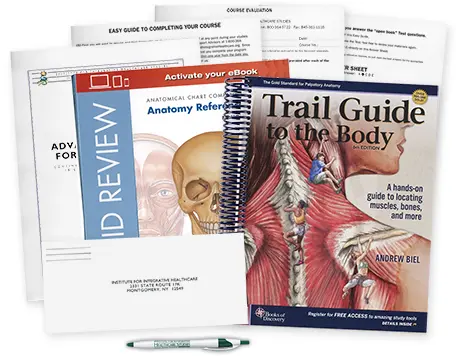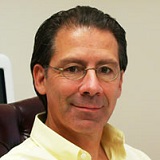
Advanced Anatomy for Professionals provides learning tools to use in evaluating your current knowledge of anatomy or for upgrading what you learned in massage school. The primary course text delves into an exploration of the skin and fascia, bones, muscles, tendons, ligaments, nerves, arteries and lymph nodes, and you'll practice valuable hands-on exercises for palpating the muscles and bony structures of the human body.
A student favorite, the supplemental course text includes transparent overlays of the body systems, organs and structures giving you the opportunity to independently test your knowledge.
With detailed illustrations, these essential materials will expand your knowledge and demonstrate how to locate and explore the body's structures manually.
Monica Wylie, LMT, BCTMB
3/13/2025
Teresa Cowser, LMT
3/3/2025
Lastly Stanton, LMT, BCTMB
2/27/2025
Richard White, LMT
2/17/2025
LaTressa Smith, LMT
2/5/2025

Original founder of the Institute for Integrative Healthcare Studies, Ralph graduated from The Swedish Institute, New York in 1981. A New York State Licensed Massage Therapist, Ralph was also the associate producer and host of the Holistic Health and Wellness and Natural Wellness programs in White Plains, NY, the creator of the Loving Pregnancy Massage video and author of the Healing Energy & Touch course manual.
Ralph has also authored and co-authored additional courses with the Institute including Developing a Wellness Center, Prenatal Massage Fundamentals, Infectious Disease: HIV/AIDS, Infectious Disease: Hepatitis, Medical Errors, Ethics: Therapeutic Relationships, Advanced Anatomy & Physiology, Deep Vein Thrombosis and Ethics: Practice Management.


Take our free online course: Ethics Refresher
We will not rent/sell your email to anyone.
You'll also receive our newsletter and special offers.
Thank you! An email will be sent to the address provided with instructions on how to enroll in this 1 CE hour course - FREE!
If you do not see our email within a few minutes of signing up, please check your Spam/Junk folders it may have been delivered there instead of your inbox.
If, by chance, you still have not received it within 5 minutes, please call us at 1-800-364-5722, Monday-Friday, between 9am-12:30pm and 1:30pm-5pm EST for assistance.